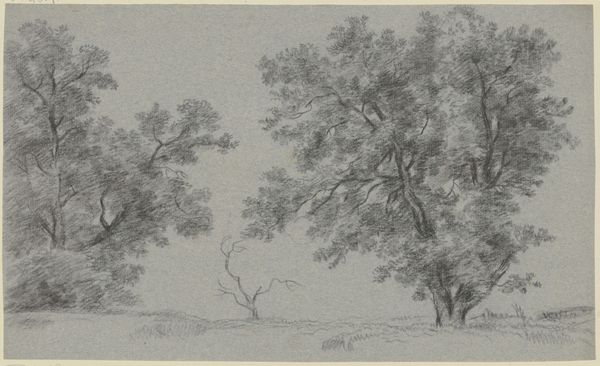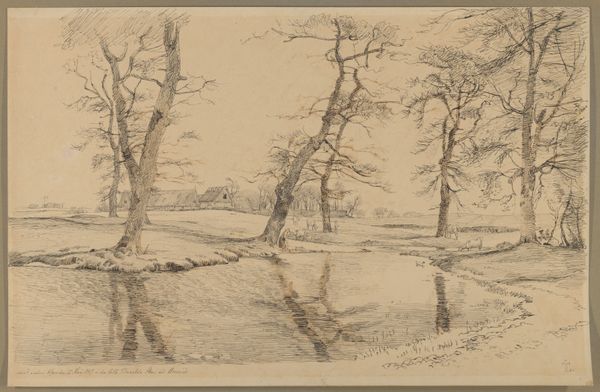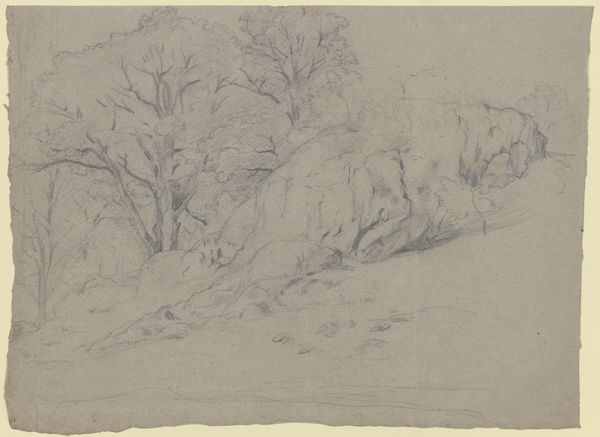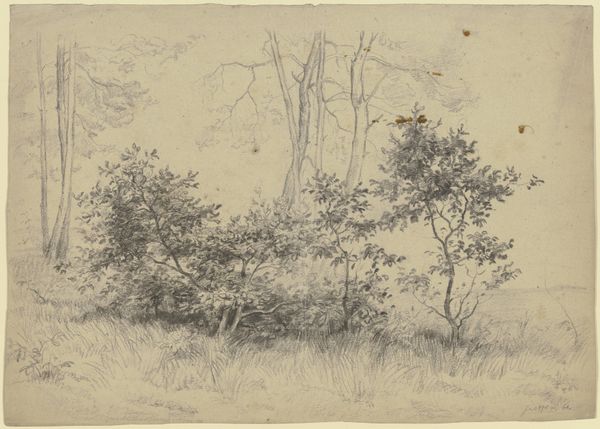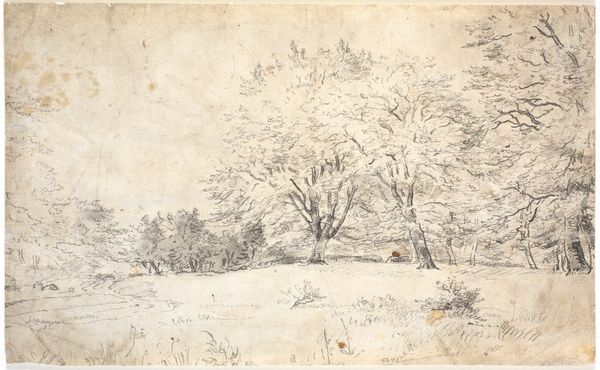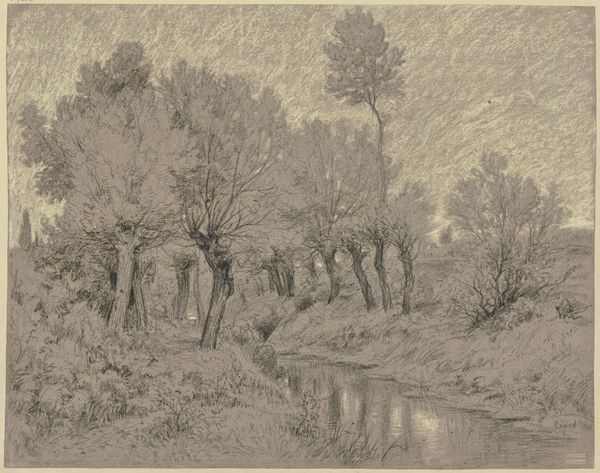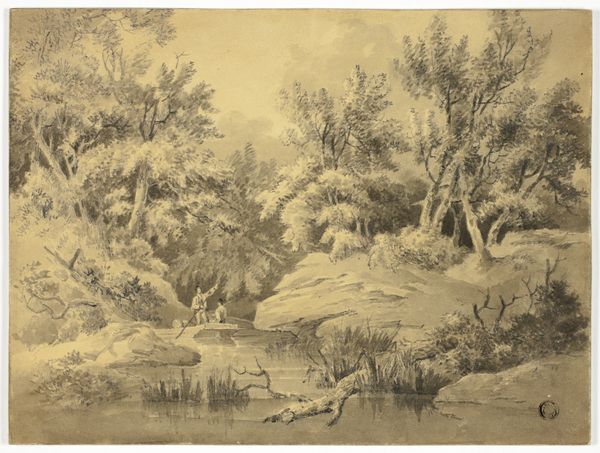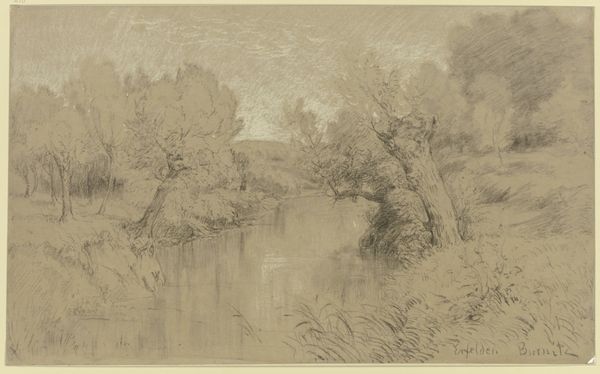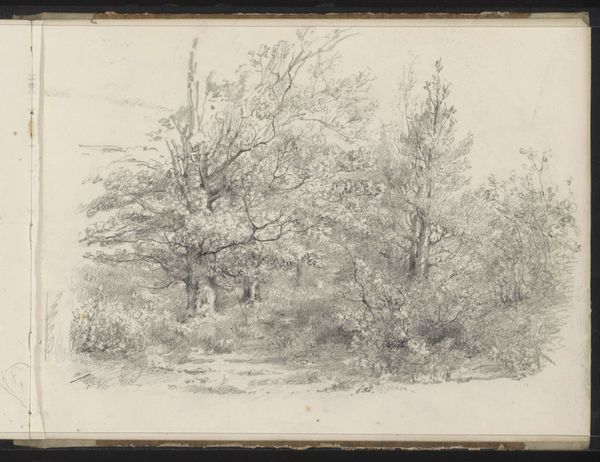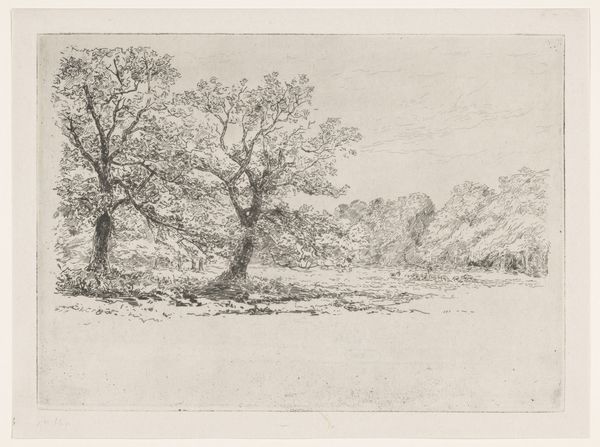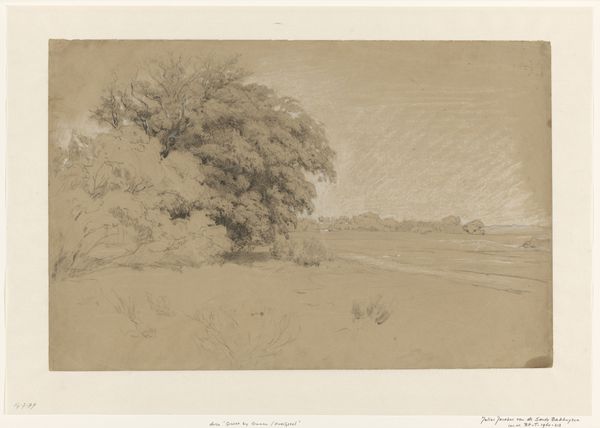
Dimensions: sheet: 18.2 × 28.1 cm (7 3/16 × 11 1/16 in.)
Copyright: National Gallery of Art: CC0 1.0
Curator: Standing before us is “Landscape, Early Spring,” a drawing executed in 1857 by Henry Hill using pencil. Editor: It feels so still. The soft gray lines give the whole piece a hushed, expectant quality, as if nature is holding its breath, waiting for the real warmth to come. Curator: I agree; Hill has certainly captured that liminal space between winter's dormancy and the awakening of spring. Observe how the bare branches reach skyward, rendered with meticulous detail—they feel almost like skeletal figures, reaching for rebirth. Trees, after all, often stand as symbols of transition, connecting the earthly and spiritual realms. Editor: That skeletal quality makes me think about the labour, though. Pencil drawing, especially with this level of detail, requires such deliberate application. Layer upon layer of graphite to achieve the depth and tonal variation we see here. It speaks to a certain patience and dedication. Curator: Exactly. The linear strokes, so prevalent in the foliage and distant trees, echo traditions of realism, combined with the Romantic sensibility of the era, in which landscape becomes a mirror of the soul. I find such power in this deceptively simple drawing! Consider how a lone artist in 1857 depicted natural forms as carriers of inner human emotion. Editor: I wonder what grade pencil he would have used. Probably multiple ones. Was he sketching *en plein air*, feeling the dampness of the early spring, or working from memory, or other sketches back in a studio? Curator: Intriguing questions that force us to consider the drawing less as a product, and more as process and its cultural context. Editor: This makes me reflect on the way seemingly mundane materials can be transformed through focused labor into profound artistic statements. I feel honored to be in front of this artwork. Curator: Absolutely. This close observation gives greater appreciation for the work—it leaves me with a renewed sensitivity to the changing of seasons and how they affect our internal landscapes as well.
Comments
No comments
Be the first to comment and join the conversation on the ultimate creative platform.
